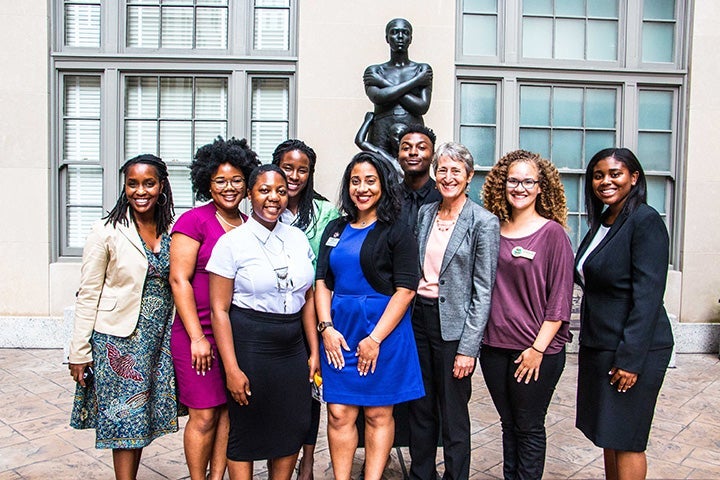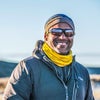In an attempt to create a more diverse workforce, Patagonia has partnered with The Greening Youth Foundation (GYF), an Atlanta-based nonprofit that helps underrepresented children, teens, and young adults become stewards of the environment.
The organization provides cultural resources and guidance to assist aspiring students, many of whom are African-American or Hispanic, in becoming knowledgeable of the natural systems that are an essential part of a healthy active lifestyle. GYF also prepares young people from diverse backgrounds to become qualified interns and prospective employees for federal land management agencies like the National Park Service, the U.S. Forest Service, and the Bureau of Land Management.
In the hopes of encouraging youth of color to consider careers in the outdoor industry Patagonia has shared 18 intern positions GYF program participants can apply for.
“At Patagonia, we saw an opportunity within our internship program to really think about how we could integrate a conversation about diversity, and how we can broaden our candidate pool,” said manager of recruiting Deanna Lloyd. “We want to make some access points within the company, through our internship program, available to diverse communities.”
Patagonia is not offering special consideration or priority placement of minority youth as interns. But the company wants to cast a wider net in its search for qualified applicants. The positions range broadly across all sectors of the outdoor apparel business from material sourcing and textile design to web development. As opportunities like these are typically shared within the rather insular and homogeneous outdoor recreation community, few outside candidates will ever hear about them, let alone apply. By connecting with an organization that works directly with young people of color, Patagonia intends to expose its brand to students and recent graduates of schools with high minority attendance, including Historically Black Colleges and Universities, or HBCUs. Though GYF is accustomed to placing interns with institutions dedicated to environmental protection, this is its first partnership with a private entity.
“This is really critical because this is yet another component of this field that suffers from the same problems that the federal agencies do: a lack of diversity,” said GYF founder and CEO Angelou Ezeilo. “If the workforce does not reflect the society in which we live, it really can’t attract everyone that needs to be a part of this whole discussion.”

In recent years, the outdoor industry has done much to address the issue of diversity. Several companies, such as Keen Footwear and REI, have engaged with organizations like Outdoor Afro and Latino Outdoors to expand their customer base into minority communities. It is their intention to encourage people of color to become involved in outdoor recreation and environmental conservation. But typically those interactions are limited to consumer events, volunteer program support, and donations of gear or even cash through grant initiatives. When it comes to employment and creating a more diverse workforce, however, most businesses are at a loss.
“Diversity has always been a piece that has been a part of these conversations, but truthfully it can be hard to tackle, understanding where to go and what organizations can help us, who to best network with,” said Lloyd. “How do we get the message of who Patagonia is into communities that we may not be reaching currently? I think that GYF is that group who we’re hopeful can really help us with that.”
Through this new relationship, GYF hopes to prepare its students for jobs in the outdoor industry. Part of a strategy to make environmental conservation more diverse and inclusive overall, the foundation wants program participants to think beyond the professional avenues of government service or university research projects. As many of these young people are working toward careers in science, technology, engineering, and mathematics, Ezeilo wants them to consider applying their skills in product design, information technology systems, accounting or e-commerce.
“We just need innovative minds and young minds in the field all together,” Ezeilo said. “It just broadens the number of jobs that young people can think of when they think about the conservation movement. Everybody is needed.”
But it’s not enough just to hire people of color in order to achieve diversity. For these interns to be successful, companies must also make sure to create a workplace where they are made to feel both welcome and encouraged to become part of the community.
“Creating a mentorship program would be huge,” said Michael Davis Jr., an advisory council member of the Emerging Leaders Program at the Center for Jackson Hole, host of the annual SHIFT Conference. “I’m sure there are some people of color already at Patagonia. Maybe not tons, but they could be the jumping off point for these interns.”
As an African-American man who works with young people through the YMCA’s outdoor leadership development program in Seattle, Davis suggests that Patagonia and other companies recognize the need for interns to receive support and guidance at this critical point in their careers. Offering points of social engagement like periodic check-ins with a mentor, the occasional home-cooked meal, or a weekend camping trip with coworkers, he says, can go a long way toward a worthwhile intern experience.
“You’re 21 years old in California. You’re making enough money to have some fun and most of your expenses are taken care of, but everyone needs that friend group,” Davis said. “You don’t want them to stay inside for 3 months.”
Institutions of higher learning like HBCUs train bright and talented students of color across a variety of academic disciplines. They have the potential to offer companies in the outdoor industry both technical expertise and the fresh perspective of an emerging social demographic. But with few established relationships to pipeline qualified applicants into jobs where they are likely to succeed and thrive, workforce diversity in outdoor businesses has proven to be illusive. Stasia Raines, director of the Future Leadership Academy at the Outdoor Industry Association, said this new partnership with GYF could be the breakthrough companies have been looking for.
“With Patagonia’s leadership in trying something that has never been done before, we hope to take this to propose a program that any company in our industry can adopt using a template that Patagonia is creating,” she said. “When we look at recreation and conservation as our goals, I really believe that it’s a birthright for all of us. As we look to increase those two things, I think that can only happen by looking at hiring and recruiting from alternative places than we have in the past.”


